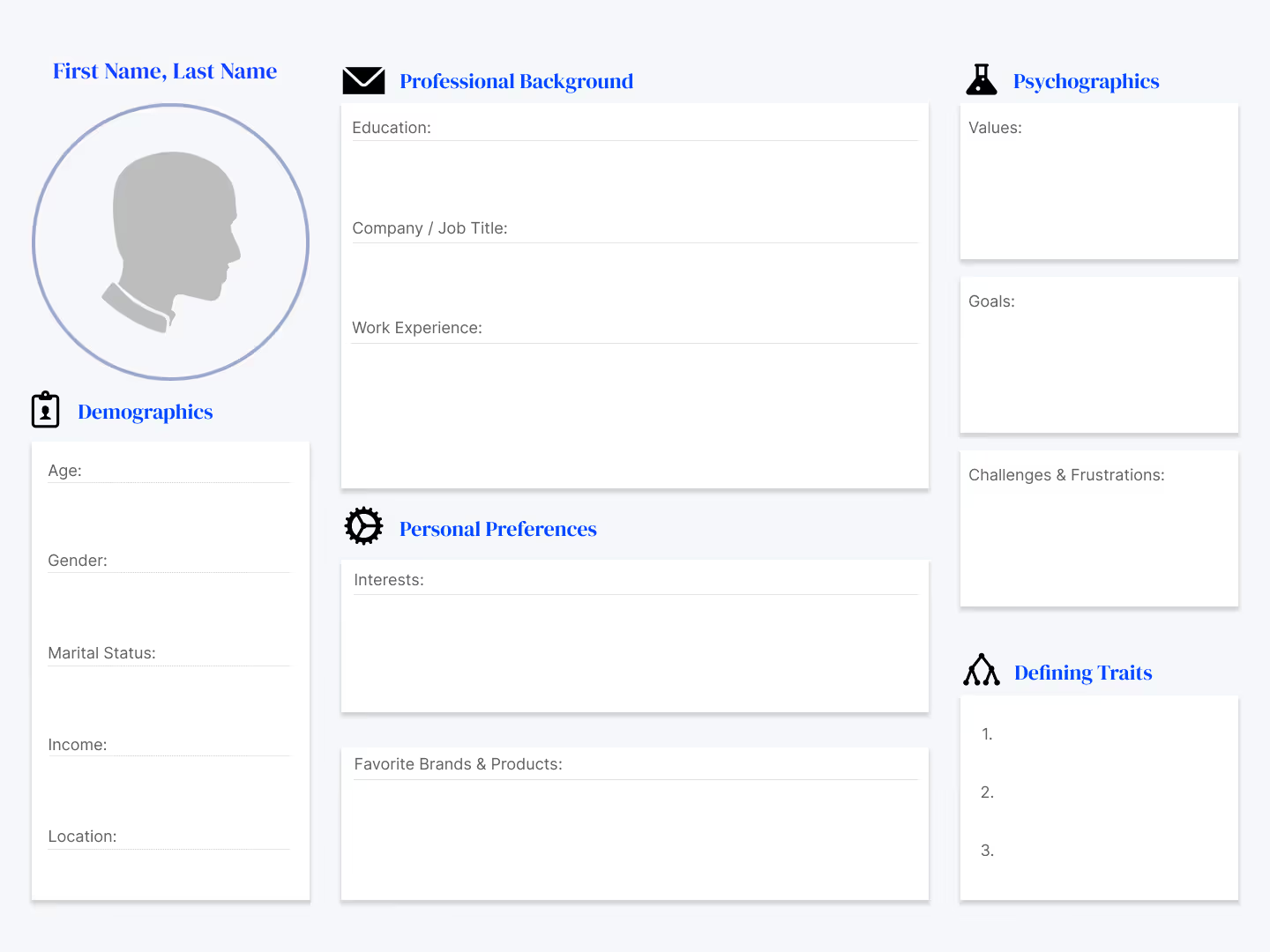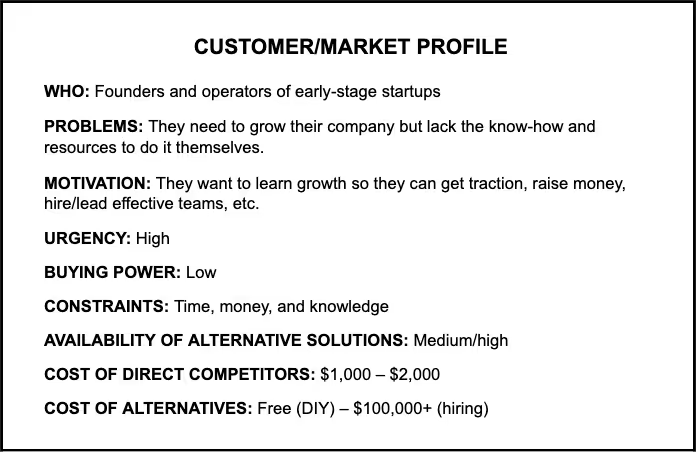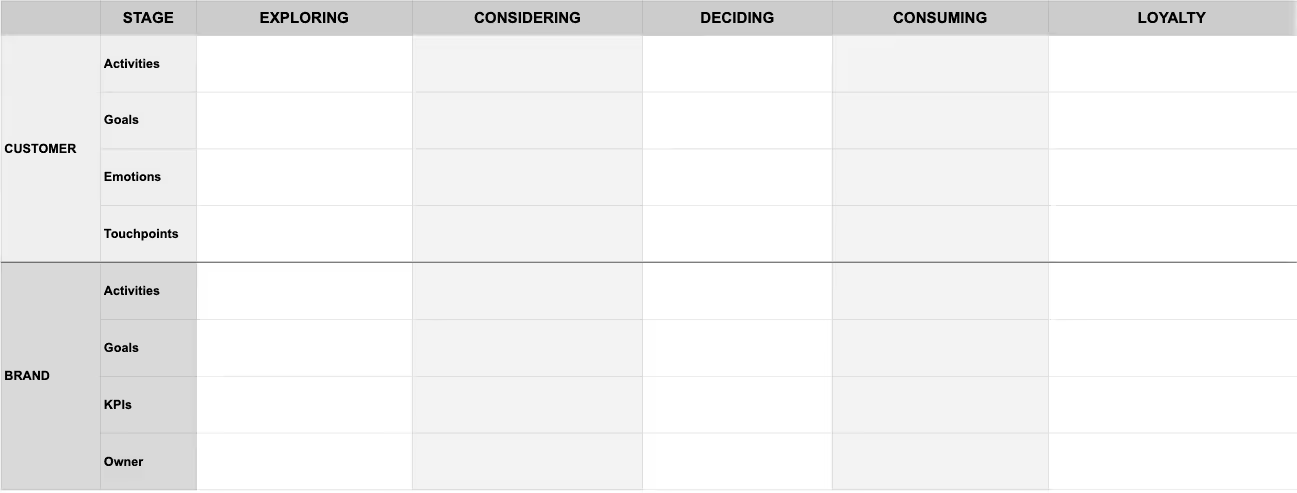
Conversation

🥳 Feedback Received!
Thanks for taking a moment to share your thoughts — it genuinely helps us make each chapter sharper.
What happens next:
- Your feedback goes straight to our product team.
- We’ll use it to refine lessons, clarify examples, and make the program even more useful.
Appreciate you helping make this program better for everyone.
Ready for your next challenge? 👇
Leveraging your market and customer research
Once you’ve collected market and customer data, transform your research into actionable insights to begin making optimizations. Here are three ways to leverage your data:
- Customer personas
- The customer/market profile
- The customer journey map
These are the deliverables that result from all the research you did in this chapter. With these in hand, you can begin making decisions—and getting the rest of your team on board.
1. Customer personas
Customer personas are fictional user profiles that represent your ideal audience and are based on your research. While the other frameworks listed below can also accomplish this, we’ll focus primarily on personas in this program. You can create them using our template.

Personas tell the story of different types of customers at the moment they encounter a problem—aka the job that they need to hire your product for. Giving detail to these stories helps to identify customer pain points and personalize your marketing for better performance.
A persona for the online learning platform Skillshare might sound like this:
Emily is a high school teacher who likes to dabble in art. She’s interested in honing her graphic design skills, with the goal of starting a freelance business later on. However, she's reluctant to take classes that require meeting in person or at certain times because of her work schedule.
Customer personas help you understand why someone considers your product—and the potential objections that you should proactively address. For example, the Emily persona tells Skillshare’s team to emphasize how their online classes are self-paced.
Even without doing customer research, you can brainstorm potential personas for your company. One of the best ways to do this is by looking at your current customers.
Identify your top customers and then drill into who they are. (If you have customer email addresses, you can use services like Clearbit Enrichment to input their email and collect more information about them and their company.) For example:
- What's their job title?
- Are they at a certain level of funding?
- Did they experience any major life events recently?
- Did someone find you through a support forum because your competitor's software wasn't cutting it?
Look for patterns and trends in your data. Then bucket your customers based on what you learn—each group should get its own persona.
Important note: Your current customer data makes a great starting point for creating personas, but you should still do market and customer research. This way, you won’t leave out any currently untapped segments of your audience.
2. Customer/market profile
The customer/market profile is a concept we’ve developed to aggregate all the important aspects of your market research, including:
- The job that needs to be done (the problem your product solves)
- Your customer persona
- Your customer’s buying power and constraints
- How competitors and alternative solutions stack up against your product
Here’s an example of one we created for Demand Curve:

Use our template to create your own. Share it with your team and help them understand who you’re building your products for.
3. Customer journey map
Many people think of the customer journey as a linear jump from point A to point B: someone sees an ad and then buys your product. In reality, this path zigzags, and it can be especially long for B2B companies.
A customer journey map is a visual representation of the customer’s process to hire your product to get a job done. Think of it as a timeline of the customer’s decision-making process.
It includes the same four stages used in the JTBD interview process, as well as a loyalty stage that comes last and focuses on what’s done to retain customers.
Here’s a template we’ve created.

Use this map to track:
- How customers’ goals and activities change throughout their buying journey
- How customers feel at different points in their buying journey
- Important touchpoints between you and your customers, which either move users forward or end their journey
Besides describing what customers are thinking and feeling throughout their buying journey, the customer journey map also accounts for how your company behaves in each stage. The point is that, just like your customers, your company shouldn’t be doing the same thing (like only sending discount codes) throughout the journey.
Look for pain points in each part of the customer journey, not just when users are facing a problem for the first time. The goal is to understand how your company and product fit into the larger context of a customer’s life.


